 Most viewed - Ichikawa 市川市 Most viewed - Ichikawa 市川市 |
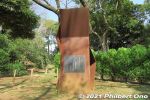
Poetry Monument for So Sakon's poem. 宗 左近2 views
|
|

Poetry Monument for So Sakon's Ichikawa poem. He was a longtime resident and honorary citizen of Ichikawa . 宗 左近2 views
|
|
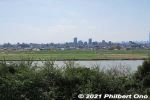
Edogawa River.2 views
|
|
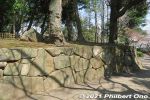
Castle-like stone foundation.2 views
|
|
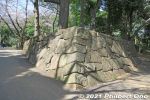
Castle-like stone foundation. Satomi Park is the site of Konodai Castle. However, this stone foundation is not original.2 views
|
|
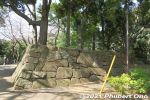
2 views
|
|
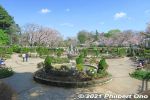
Satomi Park water fountain. This is another area of the park. Totally different landscape. This was the main site of Konodai Castle. 国府台城2 views
|
|

Satomi Park water fountain. 2 views
|
|
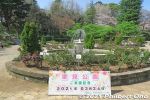
Satomi Park visit date.2 views
|
|
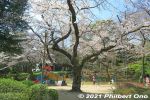
2 views
|
|
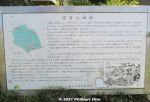
Being the site of Konodai Castle, Satomi Park was also the site of the Battles of Konodai fought twice between the local Satomi Clan (ruler of Awa Province in present-day Chiba) and the invading Hojo Clan (from Odawara) in the 16th century. 2 viewsThe Hojo won the final battle and thereby took control of present-day Chiba. The Hojo is said to have expanded and reinforced Konodai Castle.
However, when Tokugawa Ieyasu took control of Japan, he had Konodai Castle dismantled because it had a intimidating view of his own Edo Castle.
|
|
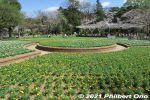
During World War II, Satomi Park was an Imperial Army base camp. It finally became a public park in 1959. Flower beds now cover the site of Konodai Castle.2 views
|
|
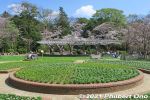
Satomi Park is also noted for roses in early summer and fall. The rose is Ichikawa's official flower. 2 views
|
|
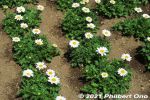
2 views
|
|
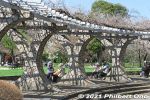
2 views
|
|
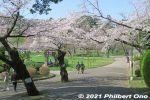
2 views
|
|
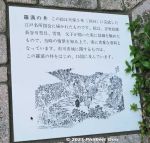
The Rakan-no-I well was actually depicted in this 1834 illustration, part of Illustrations of Edo's Noted Sights. 羅漢の井2 views
|
|
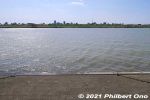
From Satomi Park, the remaining walk went along Edogawa River to the train station. 2 views
|
|
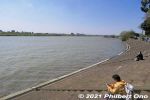
Edogawa River has a nice riverside walking/cycling path on both sides of the river.2 views
|
|
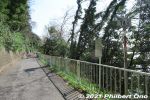
This is part of the riverside walking path. On the left is a forest on a hill. The forest is also being protected.2 views
|
|
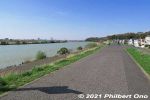
Edogawa River has a nice walking/cycling path.2 views
|
|
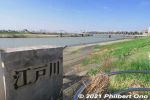
Instead of going to Konodai Station on the Keisei Line, we walked further south along the Edogawa River. Keisei Line's bridge can be seen behind us.2 views
|
|
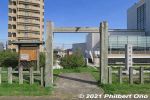
Slightly south of Keisei Line's Konodai Station next to Edogawa River is the Ichikawa Sekisho Checkpoint site. This is only a marker monument (no original structures). 市川関所跡2 views
|
|
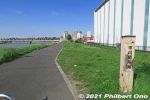
Ichikawa Sekisho marker near Yamazaki Baking.2 views
|
|
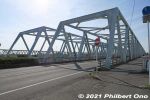
Route 14 bridge over Edogawa River. Bridges were not built over Edogawa River until after the Edo Period ended. Until then, shuttle boats were used to shuttle travelers across the river.2 views
|
|
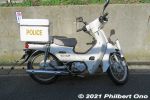
Police motor scooter.2 views
|
|
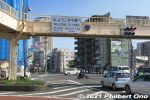
From the Edogawa riverside, we turned left on Route 14 and walked to Ichikawa Station. Welcome to Chiba! Ichikawa is one of Chiba Prefecture's cities adjacent to Tokyo. 2 views
|
|
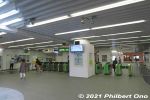
Turnstiles at JR Ichikawa Station.2 views
|
|
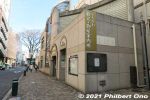
Ichikawa Tourist Information office next to Ichikawa Station. It was closed.2 views
|
|
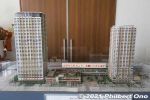
Scale model of the skyscraper buildings next to JR Ichikawa Station. On the left is The Towers West building and on the right is The Towers East. The West building has a nice lookout deck on the 45th floor.2 views
|
|
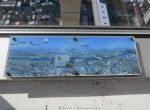
Guide to visible landmarks.2 views
|
|

Looking north.2 views
|
|
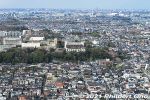
"Temple" marks the location of Guhoji Temple, famous for a 400-year-old weeping cherry blossom tree. See this album.2 views
|
|
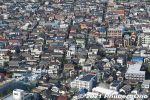
High-density housing.2 views
|
|
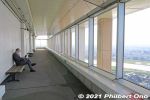
Another side of the lookout deck.2 views
|
|
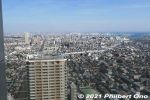
Looking east toward Chiba. The tall building in the foreground is The Towers East. The JR Sobu Line tracks can be seen on the left.2 views
|
|
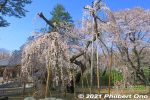
We can see that a few branches had been cut, which means the tree was larger.2 views
|
|
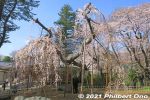
2 views
|
|
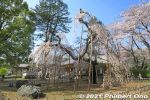
2 views
|
|
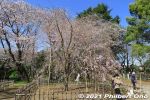
Another weeping cherry tree next to Fushihime Sakura.2 views
|
|
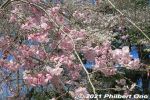
2 views
|
|
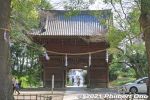
Niomon Gate rear view as you exit.2 views
|
|
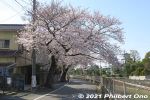
After Guhoji Temple, we walked back to Edogawa River along Mama River which had a few cherry blossoms.2 views
|
|
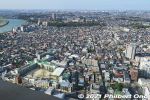
View from The Towers West lookout deck on the 45th floor. The patch of green is the hill where Guhoji is located.2 views
|
|

"Temple" marks the location of Guhoji Temple on the wooded hill.2 views
|
|
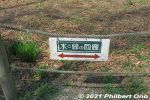
Signage for the hiking trail.1 views
|
|
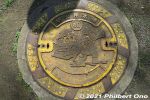
Water hose manhole for firemen.1 views
|
|
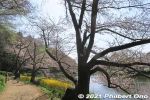
Some cherry blossoms along Junsai-ike Pond in late March. じゅん菜池1 views
|
|
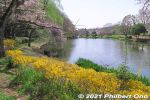
In autumn, Junsai-ike Pond is also noted for fall leaves.1 views
|
|
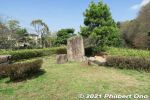
Small island in the middle of the pond.1 views
|
|
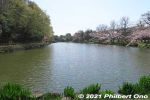
Junsai-ike Pond. No swan boats or rowboats. Only ducks. じゅん菜池1 views
|
|
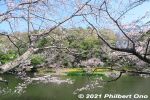
Cherry blossoms along Junsai-ike Pond. じゅん菜池1 views
|
|
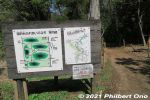
We came out of this trail which goes through into a small forest of different species of trees.1 views
|
|
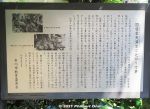
About Konodai Tenmangu Shrine and an event called Tsujikiri.1 views
|
|
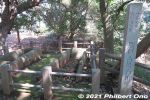
Two stone coffins on Akedo Kofun burial mound. Experts believe that they contained the remains of local nobility who ruled this area in the 6th to 7th century. Chiba Prefecture has many of these stone coffins. 明戸古墳石棺1 views
|
|
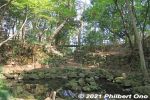
Konodai Castle remains in Satomi Park. Embankments and rocks. 国府台城1 views
|
|
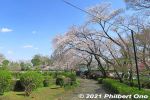
Satomi Park cherry blossoms.1 views
|
|
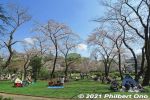
This is where most people enjoyed Satomi Park, under the cherry blossoms.1 views
|
|
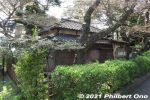
Satomi Park also has Shien-soja (紫烟草舎), the former home of famous tanka poet named Kitahara Hakushū (1885–1942) (北原白秋). He lived in this house for only a year in 1916. 1 views
|
|

About Shien-soja. It was originally located in Koiwa (Edogawa Ward, Tokyo) and moved here. (紫烟草舎).1 views
|
|
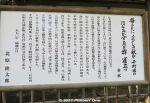
1 views
|
|
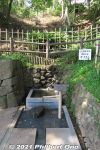
Old well on the fringe of Satomi Park named "Rakan-no-I". 羅漢の井1 views
|
|
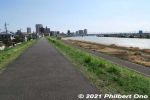
Straight ahead is the bridge for the Keisei Line. 江戸川沿い1 views
|
|
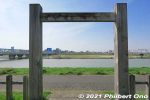
This was where people crossed the river by boat and it was a busy/important artery. The Ichikawa Sekisho Checkpoint was at the border between Shimosa (Chiba) and Musashino (Tokyo) Provinces. So the Sekisho was the border control. 市川関所跡1 views
|
|
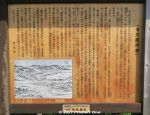
LIke other sekisho checkpoints in Edo during the Edo Period, the Ichikawa Sekisho checked for any weapons on travelers entering Edo and any women trying to escape Edo without permission. 市川関所跡1 viewsTo pass through a sekisho, travelers were required to have a travel permit (like a passport) issued by their local government official.
|
|
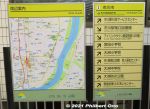
Directions at Ichikawa Station.1 views
|
|

Looking west toward Edogawa River. The JR Sobu Line (left) and Keisei Line (extreme right) over Edogawa River can be seen. The bridge in the middle is Route 14.1 views
|
|

Looking further upstream on Edogawa River. Left of the river is Edogawa (Koiwa) and Katsushika (Shibamata) Wards.1 views
|
|
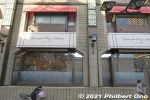
Yamazaki Plaza Ichikawa, a coffee shop and bakery operated by Yamazaki Baking in front of Ichikawa Station. This was a good place for refreshments before heading home.1 views
|
|
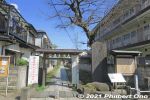
Near Guhoji is Tekona Reijindo, another temple. We didn't go to see this temple though. (Too tired walking.) Tekona Reijindo is dedicated to a local girl named Tekona who lived 2,000 years ago. 手児奈霊神堂1 viewsHer job was to fetch water from a well. She was such a beautiful girl that every man who saw her fell in love with her and wanted to marry her. They even fought over her. Even the moon fell in love with her. She got so distraught by all the attention and fighting that she drowned herself in the well. Poor girl, she was loved to death.
|
|
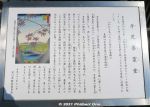
In 1501, Tekona's spirit told a priest to build a grave for her. This evolved into this temple where women pray for maternal happiness including safe childbirth and child rearing. 手児奈霊神堂1 views
|
|
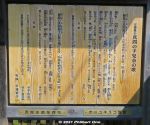
Poem about Tekona.1 views
|
|
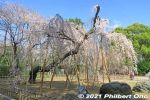
The weeping cherry tree looks different from different angles.1 views
|
|
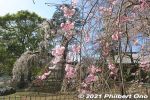
1 views
|
|
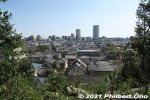
View of Ichikawa Station area from Guhoji. The two skyscrapers are The Towers East on the left and The Towers West on the right. The higher Towers West building has a lookout deck on the 45th floor.1 views
|
|
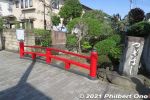
Mama no Tsughihashi Bridge near the steps going up to Guhoji Temple. The bridge is mentioned in some poems in the Man'yoshu. 真間の継橋1 views
|
|
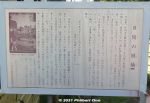
About Mama no Tsughihashi Bridge. 真間の継橋1 views
|
|
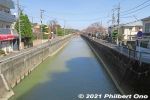
Mama River empties into Edogawa River. We later walked along Edogawa River toward Konodai Station on the Keisei Line.1 views
|
|
|
|
|
|